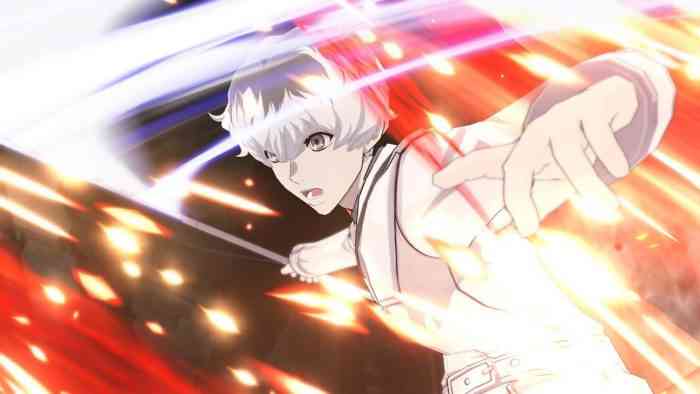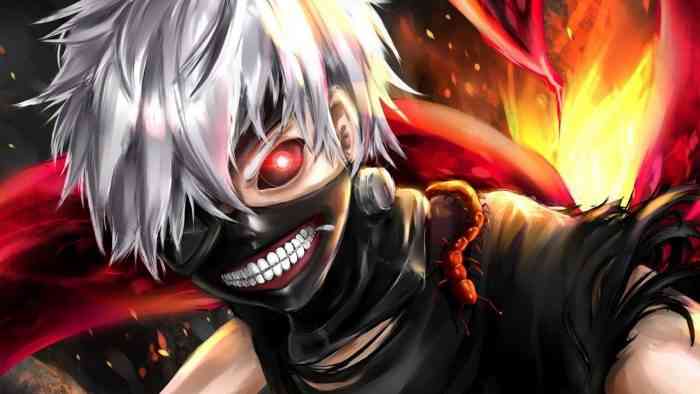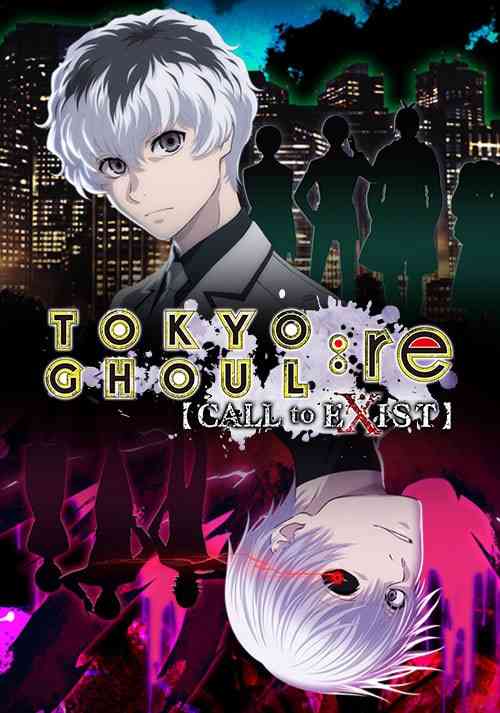TOKYO GHOUL: re CALL to EXIST Review
Characters from across the TOKYO GHOUL, TOKYO GHOUL √A and TOKYO GHOUL:re universes culminate in TOKYO GHOUL: re CALL to EXIST. A battle has broken out between the Ghouls and Investigators on the streets of Japan, resulting in a story campaign with multiple perspectives represented. Gamers start the story as Ken Kaneki, a young man who’s attacked by a Ghoul, leaving him in critical condition at the hospital. When he finally recovers, Ken realizes he’s become a one-eyed Ghoul, a hybrid of a Ghoul and a human.
Once he realizes his life has been altered for good, Ken vows to find justice by locating the Ghouls who attack humans and taking the fight to them. Though it’s a curse, becoming a one-eyed ghoul gives Ken a number of powers such as red tentacles that extend from his body to lash out at enemies and a powerful shooting attack for hitting pesky Ghouls who keep their distance. While there are other playable characters throughout the story, Ken Kaneki feels like the primary focus of the story beyond the overall conflict between Ghouls and Investigators.
Not For Everyone
The best form of storytelling and my particular favorite aspect of TOKYO GHOUL: re CALL to EXIST is the brief cutscenes that play out like pages of a manga. Brief anime clips play out as pages fall one by one, showing off art that the TOKYO GHOUL series has become known for since its origin in 2011. Although the dialogue for these clips is all in Japanese, English subtitles are included and there is plenty of time to read them and appreciate the art playing out in each panel at the same time. These scenes play out like reading through pages of a manga, proving to me that this game is a great way for the developers to bridge the gap between manga and anime.
While it’s definitely possible to progress through the campaign of TOKYO GHOUL: re CALL to EXIST on the PC without a gamepad, it’s uncomfortable. It isn’t possible through the settings to change mouse sensitivity, and the base sensitivity gives you no advantage over the gamepad and in some ways it’s a hindrance. This isn’t just the case for moving the camera or platforming sections as the combat is directly affected by this issue, making it less fluid than it should be.

The biggest issue I noticed with the combat pertaining to the mouse sensitivity issue is that unleashing a powerful attack requires your character to be facing where your mouse is pointing, which isn’t always easily doable with poor sensitivity. Many times, I ended up unleashing attacks half an inch to the left of where I wanted to, not because where I was pointing was wrong, but because where the character was facing was wrong. Both have to line up to effectively win fights and although I learnt to work around this handicap, it wasn’t comfortable.
Strong Story, Weak Combat
Overall, the combat lacks impact. Sometimes I’m visibly hitting an enemy but no damage is being done and they’re responding to the hits as if I’m not there. Even when I’m making contact and their health bars are depleting, sometimes they continue to fight me after their health has reached zero. For a game that’s so focused on combat, this affects most of the game. During every mission, hordes of Ghouls and/or Investigators are thrown at me in an experience that’s more akin to a PS2 game with how little impact the combat has.
The bread and butter of TOKYO GHOUL: re CALL to EXIST is the story, and although people who are completely unfamiliar with the manga and anime source material may be very lost, fans will feel right at home. The dialogue and poetry of the storytelling are both very alive from beginning to end. This is further fleshed out with the branching storylines that I uncover as I play as various characters from the TOKYO GHOUL series.
TOKYO GHOUL: re CALL to EXIST follows a tight mission structure rather than allowing for open-ended gameplay, which initially made me hesitant, but it’s essential that this title be linear. When I’m playing through missions point A to B, I have far more fun than in certain missions where the map opens up a little and I’m forced to find my own way to an objective.
Normally, letting the reins off like this is something I enjoy but because the level design and the models used to populate the world of TOKYO GHOUL: re CALL to EXIST are so generic, it’s hard to find where to go. Consider this like the corridor segments of Final Fantasy 15 or when you can’t find an address in a neighborhood full of townhouses that look the same. Should Bandai Namco wish to make an open world TOKYO GHOUL experience in the future, they’ll have to make one room look drastically different from another.

While there are brief cutscenes during the missions of TOKYO GHOUL: re CALL to EXIST, they are extremely dated. The visuals for these transitionary scenes would be familiar to the original Xbox and the world is fogged up more than usual just in time for each one. The combination of poor visuals and a drastic decrease in draw distance for these cut scenes confuses me as usually developers will sacrifice visuals in favor of a greater draw distance or vice versa. For the cutscenes in TOKYO GHOUL: re CALL to EXIST, both are sacrificed in favor of nothing. The graphics throughout the game are nothing to write home about but during these segments, they’re simply awful.
With how much of the game is centered around combat, I expected it to have more impact but found a lot of my hits not registering and when the hits do land, it doesn’t feel as fluid as it should. It plays more like a PS2 title than a current-gen experience. Much of the game takes place in hollow arenas or narrow corridors and running through the empty rooms gets repetitive. As a fan of anime, I can appreciate the storyline and the art panels that fall page by page during certain segments but as a gamer, I see a lot of flaws in the overall experience.
***PC review code provided by the publisher.***
The Good
- Great art and story
- Familiar voice acting
- Multiple playable characters
The Bad
- Combat without impact
- Weak Graphics
- Mouse sensitivity
- Repetitive environments

